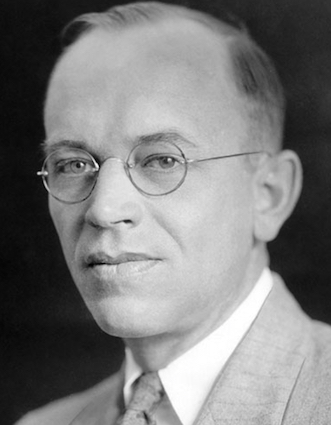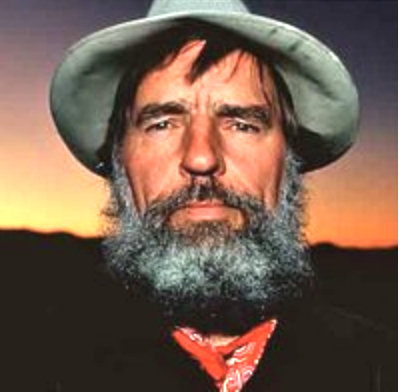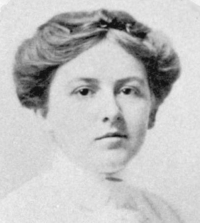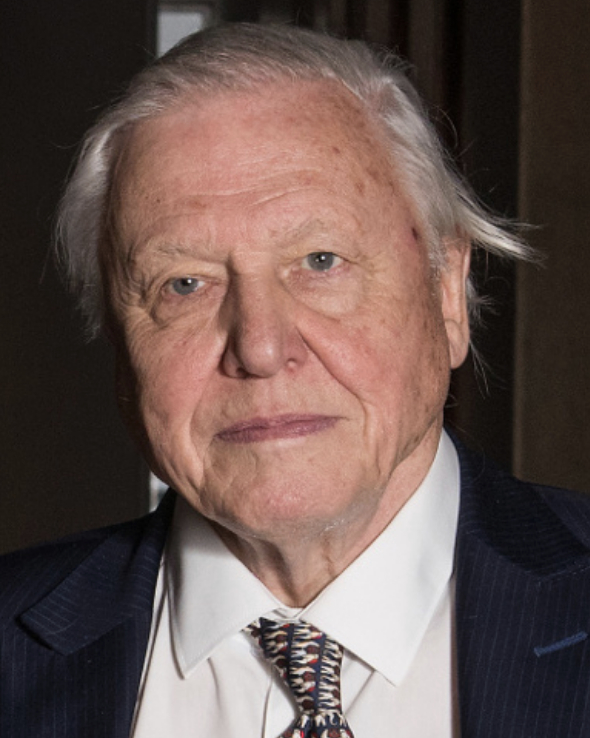environmentalists
Aldo Leopold

On this date in 1887, wildlife ecologist Rand Aldo Leopold was born in Burlington, Iowa, the eldest of four in a family of Lutherans who rarely attended church. Leopold earned his master of forestry from Yale University in 1909, worked in the Southwest, then transferred to the Forest Products Laboratory, in Madison, Wis. He became professor of game management at the University of Wisconsin in 1933 and chair of its new wildlife management department in 1939.
Leopold married a Catholic, Estella Bergene, in 1912, and they had five children. His church-going was limited to being married in one and attending his daughter Nina’s wedding. Beyond that, he believed “there was a mystical supreme power that guided the Universe, but to him this power was not a personal God. It was more akin to the laws of nature,” according to biographer Curt Meine (Aldo Leopold: His Life and Work, 1988).
In the 1930s he acquired a worn-out farm near Baraboo, Wis., dubbed “the Shack,” as a weekend retreat. He applied his respect for living lightly on the land and for “harmony between people and the land” to restore it. It remains the only “chicken coop” listed on the National Register of Historic Places. His influential book A Sand County Almanac, composed of sketches of nature and philosophical essays, was published posthumously in 1949. He suffered a fatal heart attack at age 61 while helping a neighbor put out a grass fire near Baraboo. (D. 1948)
PHOTO: Courtesy of USFS Forest Products Laboratory
“He thought organized religion was all right for many people, but did not partake of it himself.”
— "Aldo Leopold: A Fierce Green Fire" by Marybeth Lorbiecki (1996)
Edward Paul Abbey

On this date in 1927, author Edward Paul Abbey was born in Indiana, Pa., to Mildred (Postlewait) and Paul Abbey, the eldest of five siblings. Both were hardworking, independent persons, and while Mildred was a lifelong liberal Presbyterian, Paul was more radical, declaring himself an atheist and a socialist as a young adult. Edward Abbey served in the U.S. Army as a military police officer in Italy and then enrolled at the University of New Mexico, where he earned a B.A. in philosophy and English in 1951 and a master’s in philosophy in 1956. He married Jean Schmechal, the first of his five wives (with whom he had five children), as an undergrad. He was removed as editor of the student newspaper for putting Diderot’s famous quote, “Man will never be free until the last king is strangled with the entrails of the last priest,” on the cover of one issue.
He worked as a welfare caseworker, teacher, bus driver and technical writer before starting a career as a ranger and fire lookout at several national parks or monuments. His two seasons at Arches National Monument (later a national park) near Moab, Utah, in 1956-57 provided the grist for the book that brought him acclaim, Desert Solitaire: A Season in the Wilderness (in 1968), a nonfiction work that was preceded by three novels. His 1975 comic novel The Monkey Wrench Gang, about a group of ecological saboteurs is perhaps his best-known work. While he wrote primarily about environmental issues and land-use policies, Abbey was basically a political anarchist, and according to Wilderness.net, “he wasn’t comfortable with environmental activists or activism as a whole.”
His best friend Jack Loeffler recorded Abbey’s thoughts on religion after their 1983 camping trip in the Superstition Mountains of Arizona, included in his 1989 book Headed Upstream: Conversations with Iconoclasts, in which Abbey said, “I regard the invention of monotheism and the otherworldly God as a great setback for human life.” Abbey himself roundly condemned religion in his own works, particularly in A Voice Crying in the Wilderness, published in 1989, the year he died of esophageal hemorrhaging after surgery for a congenital circulatory disorder. “What is the difference between the Lone Ranger and God?” Abbey asked, before answering, “There really is a Lone Ranger.”
“Whatever we cannot easily understand we call God; this saves much wear and tear on the brain tissues.”
— "A Voice Crying in the Wilderness: Notes from a Secret Journal" (1989)
Marjory Stoneman Douglas

On this date in 1890, Marjory Stoneman Douglas, who became one of the greatest environmental writers and activists of the 20th century, was born in Minneapolis, the only child of Frank Stoneman and Florence (Trefethen) Douglas. Her parents separated when she was 6 and she had an unsettled upbringing, with her mother suffering from mental illness. Her upbringing, she wrote in her 1987 autobiography, contributed to her becoming “a skeptic and a dissenter.” After graduating from Wellesley College in 1912 (her mother died when she was a senior), Douglas served in Europe during World War I with the American Red Cross.
She became an early feminist and vigorous civil rights activist. In 1916 she and others lobbied Florida legislators for women’s suffrage. She had moved to Florida and married Kenneth Douglas in 1914, a much older man who was later revealed to be a bigamist and con artist. She went to work for her father in 1915 at the paper that became the Miami Herald. From 1920 to 1990, Douglas published 109 fiction articles and stories.
She dedicated five years to her groundbreaking book The Everglades: River of Grass (1947). The book forever changed the way that Americans viewed wetlands and the relationship between Floridians and the Everglades. It was a best-seller and battle anthem for preservationists. She founded Friends of the Everglades in the 1960s and led the group for three decades. In 1993 she was awarded the Presidential Medal of Freedom by President Bill Clinton. She was inducted into the National Wildlife Federation Hall of Fame in 1999 and the National Women’s Hall of Fame in 2000.
Although Douglas grew up in a religious household, she called herself an agnostic. In her autobiography she wrote, “The soul is a fiction of mankind, because mankind hates the idea of death. It wants to think that something goes on after. I don’t think that it does, and I don’t think we have souls. I think death is the end. A lot of people can’t bear that idea, but I find it a little restful, really.”
Before her death at age 108, she asked that there be no religious ceremony. (D. 1998)
PHOTO: Marjory Stoneman as a Wellesley senior.
“I believe that life should be lived so vividly and so intensely that thoughts of another life, or of a longer life, are not necessary.”
— Douglas' autobiography "Marjory Stoneman Douglas: Voice of the River" (1987)
David Attenborough

On this date in 1926, Sir David Attenborough was born in London, England. He is the brother of Lord Richard Attenborough, the director and actor. He graduated from Cambridge University in 1947 with a degree in Natural Sciences and then spent two years in the Royal Navy.
In 1952 he joined the BBC as a producer. He began working on his first series, “Zoo Quest,” a wildlife documentary series, in 1954. Attenborough was appointed controller of BBC Two in 1965 and director of programming in 1969 before deciding to return to creating nature series in 1973. He is known for the popular trilogy “Life on Earth” (1979), “The Living Planet” (1984) and “The Trials of Life” (1990). His other series include “The Private Life of Plants” (1995) and “Life of Birds” (1998). He was knighted in 1985 for his services to television.
Attenborough was married to Jane Elizabeth Ebsworth Oriel from 1950 until her death in 1997. They have two children. He was never religious and was not brought up with faith. “It never really occurred to me to believe in God,” Attenborough said in a 2009 interview with Radio Times. “And I had nothing to rebel against. My parents told me nothing whatsoever. But I do remember looking at my headmaster delivering a sermon, a classicist, extremely clever … and thinking, he can’t really believe all that, can he? How incredible!”
When Radio Times asked Attenborough why he never credited God in his nature documentaries, Attenborough responded: “They always mean beautiful things like hummingbirds. I always reply by saying that I think of a little child in East Africa with a worm burrowing through his eyeball. The worm cannot live in any other way, except by burrowing through eyeballs. I find that hard to reconcile with the notion of a divine and benevolent creator.”
Attenborough addressed evolution in his BBC documentary “Charles Darwin and the Tree of Life” (2009): “Evolution is as solid a historical fact as you could conceive.”
PHOTO: Attenborough in 2015; John Cairns photo (cropped), CC 4.0.
“… I'm not so confident to say that I'm an atheist, so I'd prefer to say I'm an agnostic.”
— Attenborough, BBC (Jan. 25, 2009)
Robert Redford

On this date in 1936, Charles Robert Redford Jr., who would become an iconic actor, director, producer, environmentalist, entrepreneur and philanthropist, was born in Santa Monica, Calif. “Growing up in a working-class world in Los Angeles, I had no luxuries or entertainment. I was ashamed to have people come to our house,” he told Playboy in November 2007. He had some youthful run-ins that lost him a baseball scholarship at the University of Colorado in 1957.
As a student at the American Academy of Dramatic Art in New York, he made his stage debut in the comedy “Tall Story.” His movie debut was “War Hunt” (1962). He starred in “Barefoot in the Park” on Broadway in 1962, finding fame after reprising that role on screen five years later. His role in “Inside Daisy Clover” (1965) won him a Golden Globe for the best new star.
Playing the Sundance Kid in “Butch Cassidy and the Sundance Kid” (1969) was considered his breakthrough role, also bringing him a lifelong friendship with Paul Newman. Next were “The Way We Were” (1973), “The Sting” (1973) and “All the President’s Men” (1976). Other memorable roles included “This Property Is Condemned” (1966), “Downhill Racer” (1969), “The Candidate” (1972) and “Three Days of the Condor” (1975).
He has also directed a number of films, including “Ordinary People” (1980), which won him a directorial Academy Award, “A River Runs Through It” (1992), “Quiz Show” (1994), “The Horse Whisperer,” “The Conspirator” (2011) and “The Company You Keep” (2012). More-recent movies included “All is Lost” (2013), in which he was the sole performer, and a turn as Bill Bryson in “A Walk in the Woods” (2015).
He made a cameo appearance in 2019’s “Avengers: Endgame,” in which he reprised his role from 2014’s “Captain America.” “Avengers” replaced “Avatar” as the highest-grossing film of all time. In July 2019 it was announced that he would come out of retirement to play President Robert Redford, a fictionalized version of himself, in the HBO drama series “Watchmen.”
Redford has used his celebrity to further environmental and progressive causes, founding the Sundance Film Festival and the Sundance Film Institute in Utah for independent filmmakers, as well as Sundance Cinemas. He married Lola Van Wagenen in 1958, which ended in divorce in 1985. Their children are Amy (1970), James (1962), Shauna (1960) and Scott (1959, who died shortly after birth). Redford married German painter Sibylle Szaggars in 2009.
His honors include an award from the Kennedy Center (2005), The American National Medal of Arts (1969) and the 2002 Oscars Lifetime Achievement Award.
PHOTO: Redford in the film “Barefoot in the Park” in 1967.
PLAYBOY: Do you believe in an afterlife?
REDFORD: I’m not sure I do. I’ve explored every religion, some very deeply, enough to know there’s not one philosophy that can satisfy me. Problems can’t be solved with one way of thinking. If anything is my guide, nature is. That’s where my spirituality is. I don’t believe in organized religion, because I don’t believe people should be organized in how they think, in what they believe. That has never been driven home as hard as with the [Bush] administration. When somebody thinks God speaks to him, you’ve got trouble. If God is speaking to the president, he’s speaking with a forked tongue, because the behavior of this administration doesn’t seem very godlike or spiritual. … Is there an afterlife? As far as I know, this is it. It’s all we've got. You take your opportunities and you go for it.— Redford, Playboy interview (November 2007)
